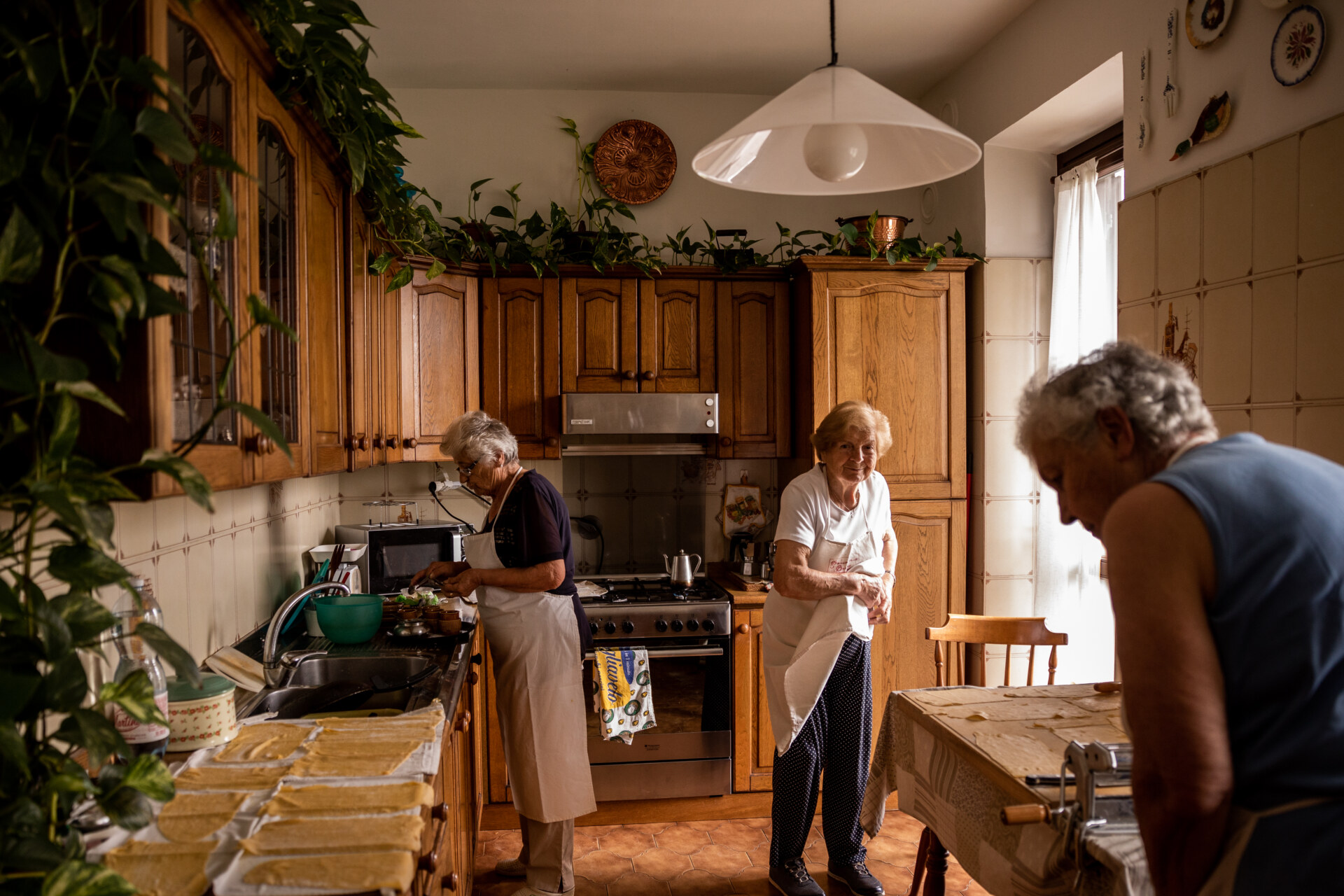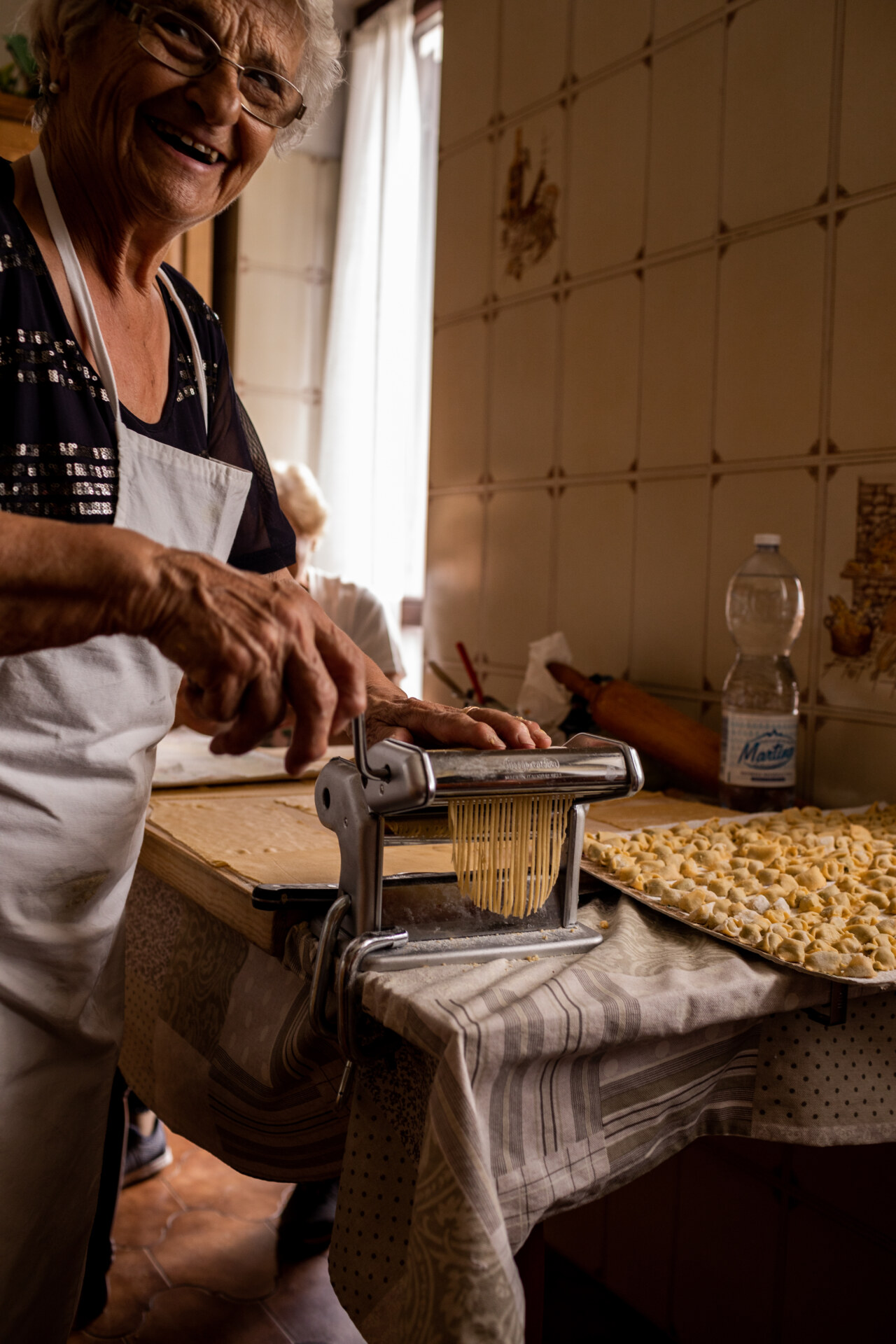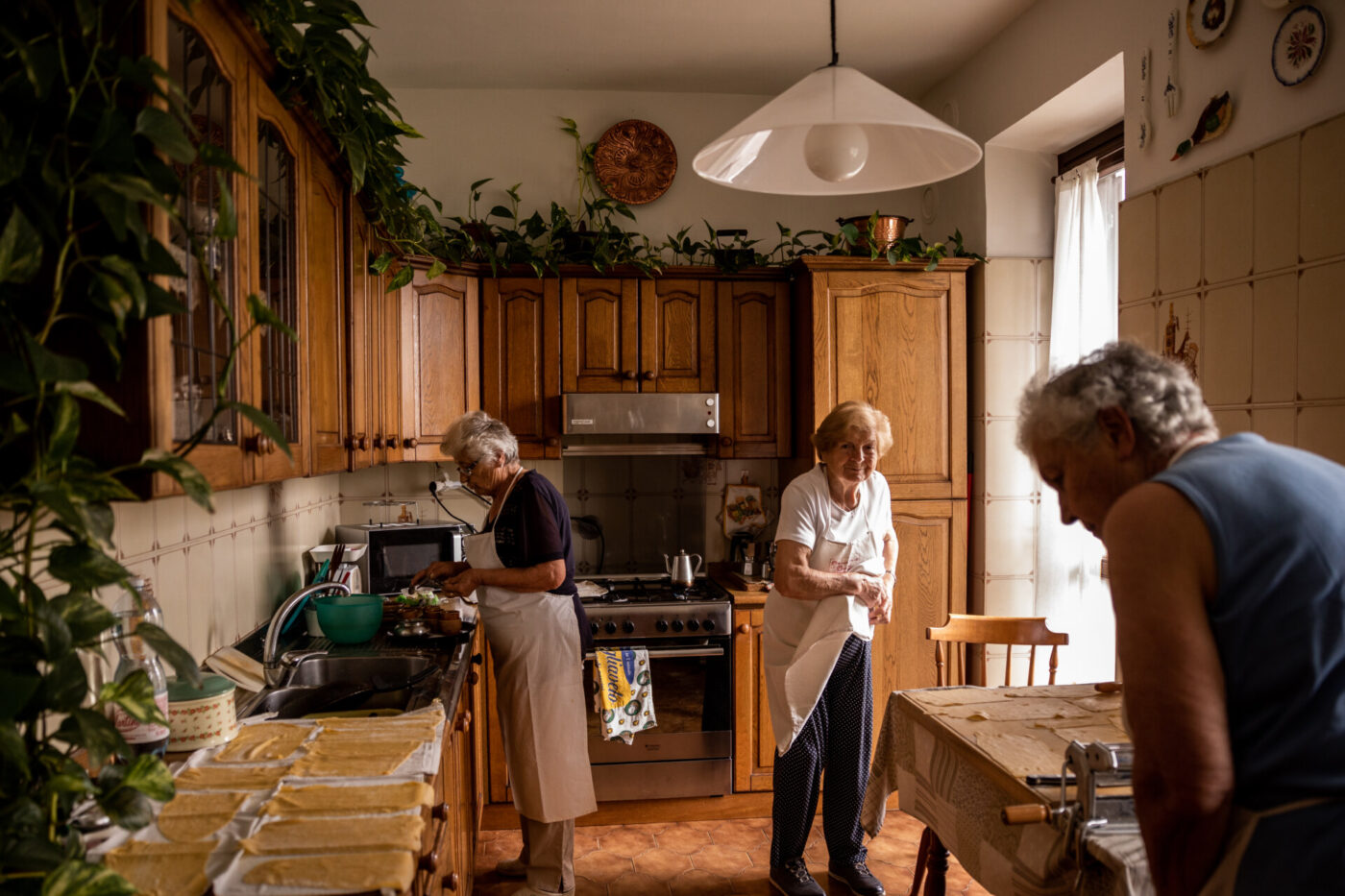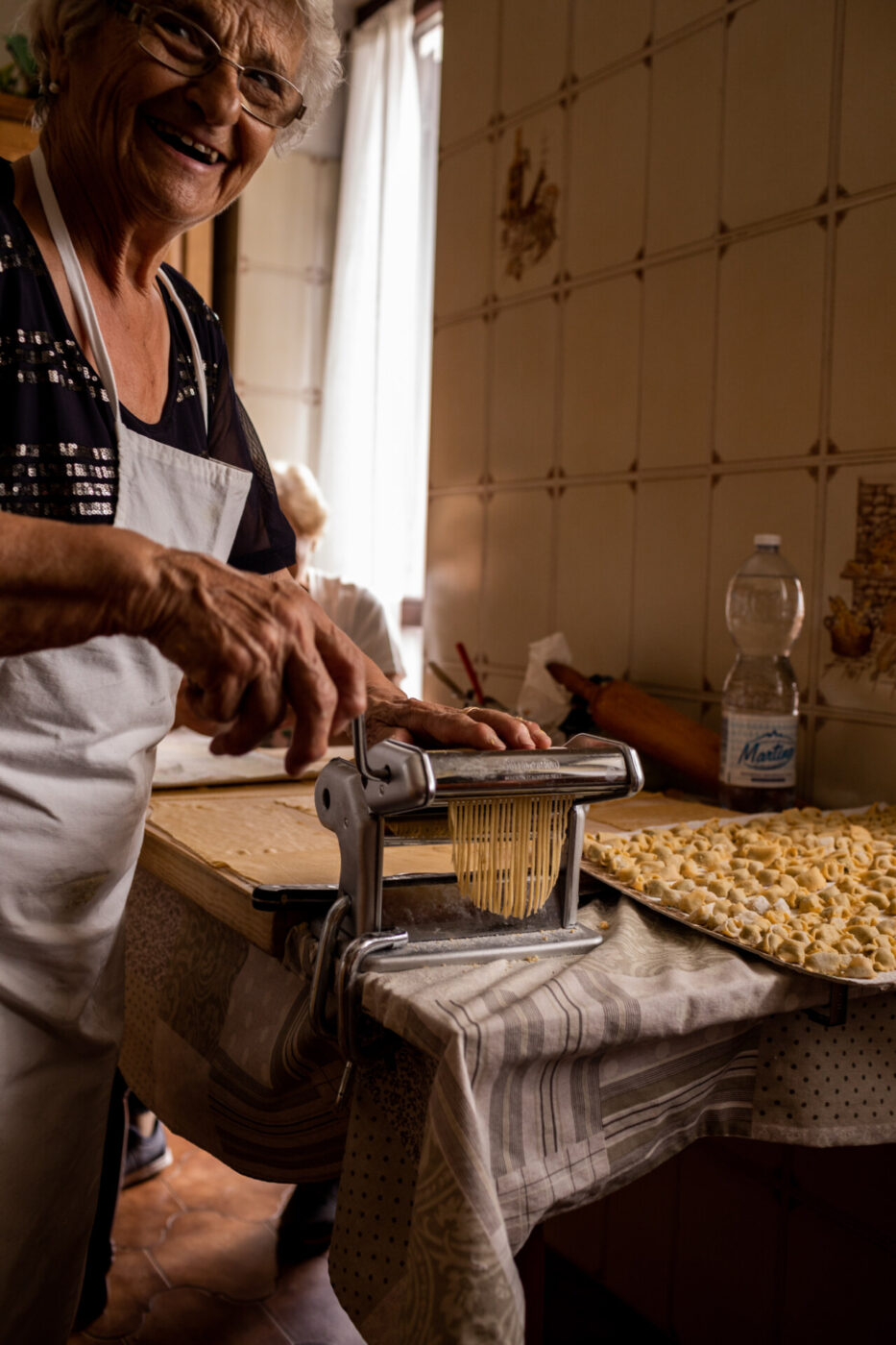I had been warned, and I’m not naive, but the shock to my pride followed by subsequent embarrassment was not what I expected to feel when I had asked for the cappuccino. It was maybe my third or fourth day in Italy and, exhausted after finishing up the last bit of unpacking that morning, I wanted something wholesome and energizing. I ordered–and was immediately shut down, followed by a flurry of phrases and an alternative suggestion, which I meekly agreed to. What was placed in front of me on the bar–a macchiato–looked like a cappuccino for dolls. The hot liquid hit my empty stomach–the caffeine was immediately absorbed, but I lacked the soft landing and protection of milk in my belly. To me, milk was a buffer against the sharpness of the espresso; to Italians, evidently, it was an irritant best avoided later in the day, when your body is slower to digest it. I performed that awkward Midwestern toothless smile, paid, and rambled on (and my stomach rumbled) for another hour until aperitivo became appropriate.
This was the first of many cultural gastronomic rules I would come to learn, and–often going against my American preferences–come to practice. No cappuccino after 11 AM (10:30, even)–or any drink with milk after food. No taking your drink to-go. No proteins for breakfast, only light, sweet things. Have aperitivo before dinner and digestivo after dinner. Wait two hours after eating to swim. No ice in your beverages. Cheese does not go on seafood. Order and eat antipasti, primi, secondi, then contorni–in that order. Fried foods eaten immediately with or before red meat will make you feel ill. Take a passeggiata after lunch or dinner. Beware of peppers–peeled is preferable–and onions; garlic is a fickle friend. These are the rules of the big Italian D: Digestion, on most Italians’ minds every waking second, it seems. Here, calling a restaurant “pesante” (“heavy”) is a valid reason to change reservations, and declaring a food “leggero” (“light”) is a compliment second to none. It’s no wonder Gaviscon goes flying off the shelves.

Photography by Letizia Cigliutti
For most non-Italians, these rules seem easily brushed off and broken, merely suggestions or myths adding that dash of extra to one of the world’s most popular cuisines. For Italians, though, these are testaments and pinnacles of digestive behavior for the sake of good health; if violated, you might be swiftly disciplined by your nonna, looked at questioningly by friends or family, or even given the curt response of, “Ma, signorina, no,” from behind the bar–like I was given.
Considered as wives’ tales and superstition for those who weren’t raised with these rules, they present as off-putting, limiting, excessive, and without reason. It may come as a surprise then that the Italians are kind of justified in these beliefs. There’s some interesting historical and cultural backing to these quirks and quips of digestion–some that persist today in and outside of Italy. Let us take a step back in time to Medieval Italy–a quick internet search will help situate and refresh the cobwebs in our minds of this time of loss, growth, death, illness, drama, and…well….we’ll call it “inspired creativity,” one of which we call Galenic cooking.
Often referred to as humorism, this Medieval era style of cooking found inspiration from the ancient Greek physician and philosopher Galen, suitably its namesake. Drawing from the disciplines of philosophy and physical medicine, food was considered a tool for balancing and maintaining good health, fixing issues, and ensuring a good life–a particularly attractive methodology given the era’s epidemics of bubonic plague, leprosy, smallpox, tuberculosis, and anthrax, among a plethora of other wretched health issues. With all of these illnesses and their corresponding fluids floating about, it’s no wonder Galenic cooking relied on the balancing and adjustment of the “humors.” Humors are bodily liquids designated as blood, black bile, yellow bile, and phlegm–all of which are mirrored by the natural elements–fire, water, air, and earth. Everyone was designated a certain kind of temperament based on these elements–someone who tends to run hot and wet, has childlike energy, perhaps a spring in their step, finds themselves inclined towards pleasure and indulgence, would be considered sanguine, relating to blood. Certain ideas about order and consumption were established based on which was your predominant humor, essentially your diagnosis: temperature, elements, seasons, bodily functions, and relation to lifecycle were all factors that could be toggled and toyed with to “prescribe” your condition. This sort of visceral and biological horoscope would help guide people–and their medical professionals–in finding the right path.
Nowadays, it’s difficult to really see how this matters, or is even valid, even when Galenic dietetics continue to be used around the world. After all, what is black bile? Ew. May I present to you, a more digestible example of Galenic humorism from the knowledgeable researchers of the University of Oxford and The Folger Shakespeare Library:
Black bile (again, ew), like earth, was cold and dry. The Greek word (written in the Latin alphabet) is “melaina khloé,” which is the root of the English word “melancholy”. Apparently produced in the spleen, this dark liquid was understood to cause depression if produced in excess, leading the liver to secrete blood contaminated with this black bile (we now know this to be medically untrue, of course). “Each temperament carried its own set of characteristics, which still resonate in our language today. Sanguine people were thought to be ruddy and cheerful, phlegmatics pale and listless, cholerics jaundiced and angry, and melancholics dark and sad (but often creative).”
For example, we’ll say I’m a melancholic person. Cold and dry, typically of a slender build with a darker or dusky complexion, often inclined to solitary life and a lover of a good night’s rest. In Galenic terms, I may tend towards cold and dry foods that may be sour and tart, being melancholic in nature, so I should eat the opposite of my disposition to maintain balance – sanguine foods of hot and moist nature. With this in mind, I would be prescribed to lay off the vinegar and lemons and take a fork to a thick, juicy stewed meat or river fish like trout and carp, introduce more fruits like apples, pears, and grapes into my diet, and include dates, figs, turnip, and cauliflower on my plate. Risotto, soup, soft-scrambles, perhaps a casserole or pasta bake might be some of the dishes I would consider cooking while avoiding cucumber, squash, milk, and lentils–foods that are considered “cold and dry.”
This methodology was not just limited to digestion and the physical act of eating…or its associated after-effects, if you know what is insinuated. It was believed that this style of cooking and consumption could affect your mood, temperament, and behaviors–perhaps even to the extent of using what you ate as an excuse for your disposition on any given day. Certain liquids would aid in pre-meal preparedness and digestion just as after-dinner drinks, extremely hot or cold temperatures could create imbalance and sickness for the right or wrong people (ever heard of colpo d’aria?), fatty foods could stir up an appetite and prepare the body for consumption, a sweet treat accompanied by a strong herbal liquor could set one up for a pleasant digestion and leave a good taste in the mouth–and, hopefully, better smelling breath. Does this sound familiar? It should–it’s how an Italian menu these days is now organized.
This practice of Galenic humorism lasted throughout the Renaissance, where it slowly started to peter off in lieu of actual medical advancements and greater understanding of the human body. Moreover, plenty of exceptions to these rules exist–gelato midday, panna cotta after a big dinner out, brioche salato with coffee in the morning, ice with carbonated beverages (but not too much ice). Surely as habits and tastes changed, so did behaviors and rules. While you’re not likely to find a Medieval doctor still taking appointments, you can find Galenic diets still practiced in the Islamic world and Indian subcontinent, though less frequently in Italy–although plenty of online self-tests can be found to determine your humorist disposition. The science of humorism may not have aged well in the Western world, but nonetheless, we can see where its metaphorical ruins live–in these digestive beliefs, these behavioral rules, on Italian menus, and certainly in Italian paranoias.


